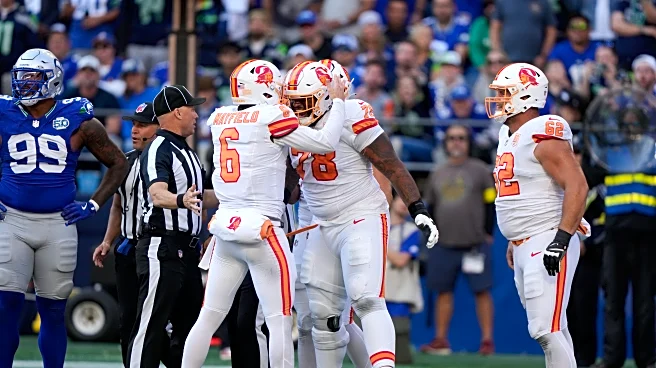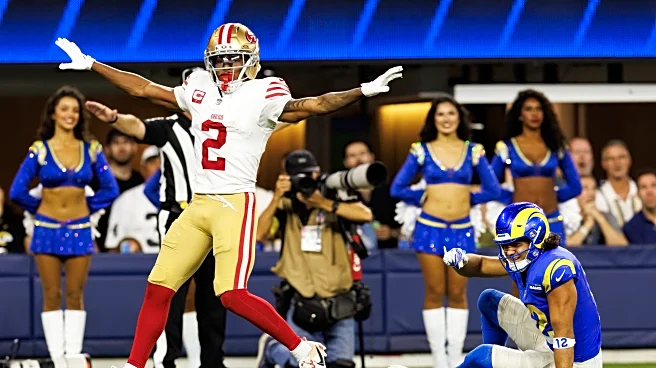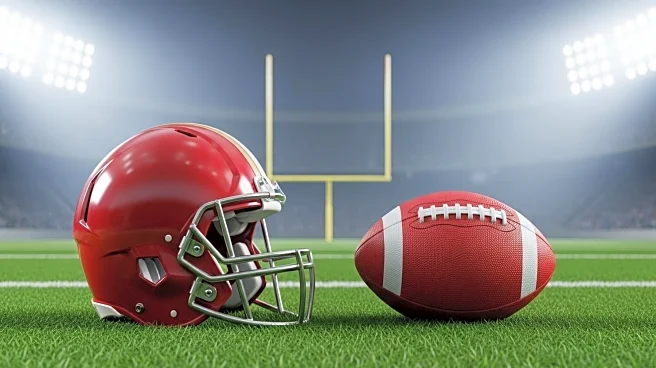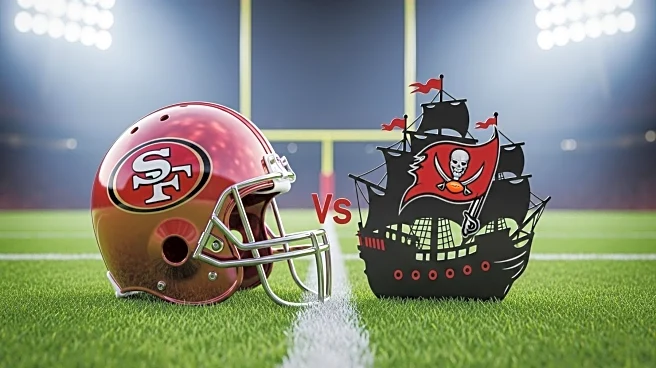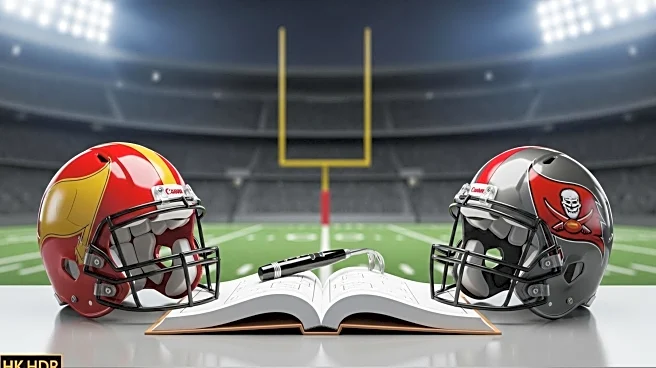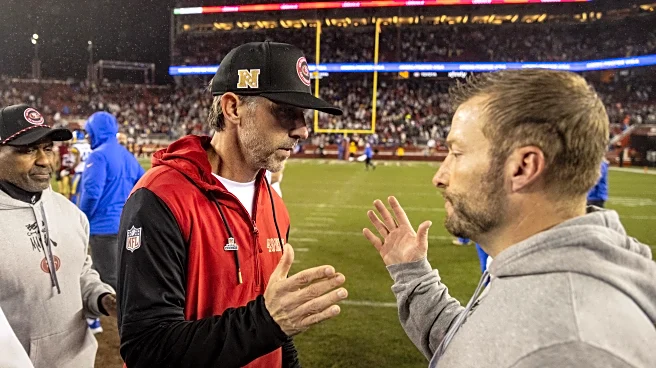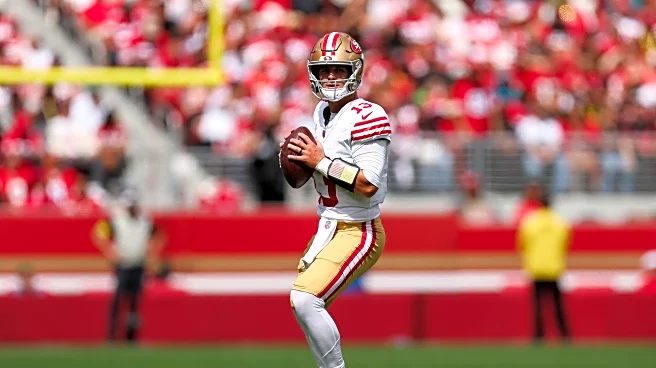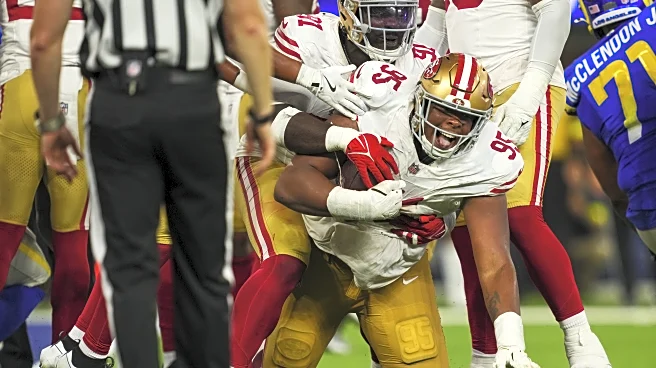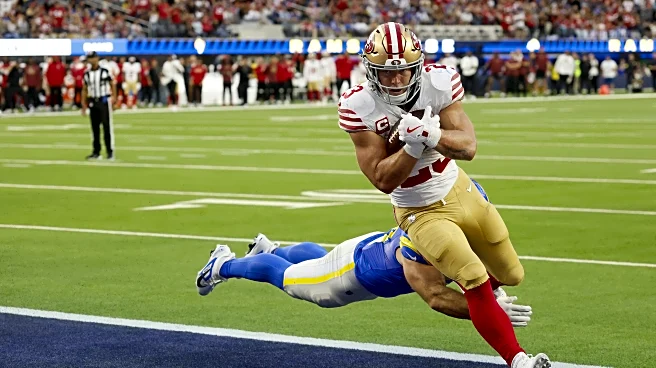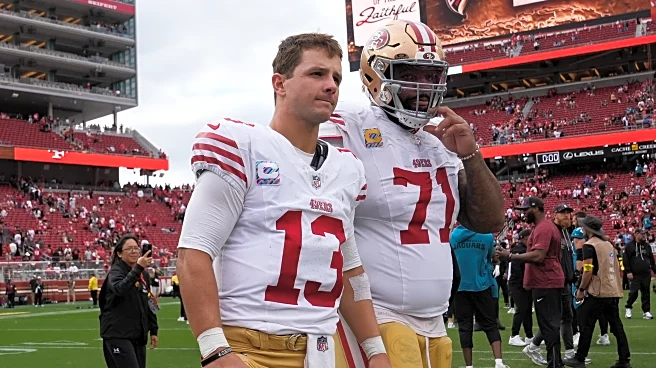The San Francisco 49ers and Tampa Bay Buccaneers are a perfect example of the “Spider-Man” meme. Both teams are 3-0 on the road. They each have four wins. Neither team has won a game by more than a touchdown.
That’s how two four-win teams have a combined point differential of 11 points.
The last thing either team needs to do is apologize for winning. It’s hard enough as it is. Every NFL team is dealing with injuries. There aren’t many teams as banged up as these two.
The 49ers have eight players who are currently eligible to return from the Injured Reserve/PUP List at some point in October. There are already six players who were placed on the season-ending Injured Reserve. And that doesn’t count players like Brock Purdy, Jordan Watkins, or Jordan James, who are injured, have missed multiple games, but haven’t been placed on IR.
Tampa Bay just played a game without two of its top cornerbacks, a future Hall of Fame wide receiver, and an electric running back. The Buccaneers have nine players on their Injured Reserve/PUP list.
Somehow, after five games, the 49ers and Buccaneers would host a playoff game if the playoffs started today. The postseason feels like a lifetime away, but these teams feel poised to cross paths in January.
Saleh zigs while Bowles zags
The defensive coordinators in this game couldn’t be any different.
Saleh rarely blitzed with Nick Bosa in the lineup. Since Bosa’s injury, the Niners’ blitz rate has actually regressed. They are 29th in the NFL with a blitz rate of 19.6 percent.
Saleh has found ways to get creative, protect his secondary, and limit big plays. No team runs Cover 6 at a higher rate than Robert Saleh. Cover 6 allows players like Deommodore Lenoir, who is playing his first full season on the perimeter, to avoid being matched up 1-on-1 down the field against bigger, speedier wideouts. In the event of an injury, you can also “hide” a backup like Darrell Luter for a game.
Keeping two deep safeties forces the offense to beat you by 1,000 cuts, which few quarterbacks have the patience to do. The 49ers start two rookies in the secondary. Single-high safety alignments would put Upton Stout and Marques Sigle in situations like we saw in Week 5: Vulnerable.
Bowles is the polar opposite. Tampa Bay has run Cover 0 triple (6.3%) the amount of time the 49ers have (2.2%). If you’re remotely familiar with what Bowles wants to do defensively, it shouldn’t surprise you to know that the Bucs have the third-highest blitz rate in the NFL. For what it’s worth, Bowles only blitzed Sam Darnold ten times last week with a banged-up secondary, but Mac Jones won’t be as fortunate — especially if Ricky Pearsall and Jauan Jennings remain sidelined.
These coordinators haven’t exactly faced a murderer’s row of quarterbacks. Bowles went against Michael Penix, C.J. Stroud, Tyrod Taylor, Jalen Hurts, and Sam Darnold. There’s…maybe…a Tier III quarterback in that group?
Saleh doesn’t have much room to talk. Darnold, Spencer Rattler, Kyler Murray, Trevor Lawrence, and Matthew Stafford aren’t much better. Stafford is an elite quarterback, but every other quarterback listed in this group we can file under “suspect.”
Different scheme, similar results
Despite playing a perceived “easy” schedule, both defenses rank in the bottom half in schedule-adjusted efficiency. These teams have been luckier than good at stopping the pass.
Stafford carved the 49ers up and down the field. After the first two drives, Stafford went 27-for-42 for 365 yards. He threw for three touchdowns and wasn’t sacked once. Reading those numbers makes you wonder why Sean McVay took the ball out of Stafford’s hands on fourth down.
Tampa Bay’s passing defense has been considerably worse than the Niners. Saleh’s defense falls in the mold of a bend-but-don’t-break unit. Tampa Bay is 27th in EPA per dropback and 31st in dropback success rate. The Bucs are near the top of the league in touchdown passes and first downs allowed. It’s been consistent every week.
Last week, it was Jaxon Smith-Njigba who lit the Bucs up for 132 yards. Two other players had over 50 yards receiving. Garrett Wilson had 84 yards with Tyrod Taylor throwing it to him.
After watching Tampa Bay’s secondary, Jauan Jennings’ ribs and ankle should feel a lot better. This was supposed to be a Ricky Pearsall game. Tampa Bay allowed the second-most receptions to the opposition’s No. 1 wide receiver. Pearsall was working on the side during Thursday’s practice, which is hopefully a sign that he’s progressing.
Who will be the best of the best?
It was always going to be a Christian McCaffrey game, regardless of which receivers are healthy. That bodes well for San Francisco, as the Bucs are content in allowing yards to running backs. Only four teams surrender more yards to running backs through the air.
Christian McCaffrey is averaging a career-high 77.4 receiving yards per game. That is the most by any running back in a season dating back 40 seasons. The next-highest was Marshall Faulk in 1999 with 65.5 yards, back when his quarterback was Peyton Manning.
Last week, Klint Kubiak went out of his way to target Lavonte David and rookie cornerback Jacob Parrish. Those two combined to allow 13 receptions on 14 targets for 10 first downs and two touchdowns. Hello, McCaffrey and Jennings.
Conversely, rookie Emeka Egubka is having a historic start to his rookie season. He’s just the third player in the Super Bowl era to record 425+ receiving yards and 5+ touchdowns in their first five career games. You have heard of the other two: Ja’Marr Chase and Randy Moss.
Egubka is difficult enough to cover as it is, but he lines up all over the field, making it impossible to key in on him. Egubka has lined up wide on 191 snaps, but in the slot on 99 snaps. And those numbers don’t tell the whole story of how often Egubka is on the move pre-snap. It’s why we can expect the 49ers’ secondary to be tested early and often.
Is this game as simple as which top player makes the most plays? It feels like it.

